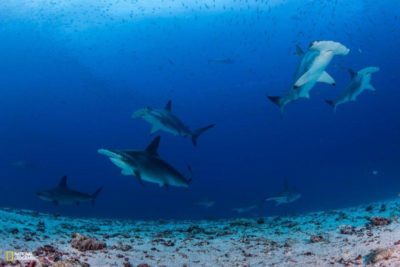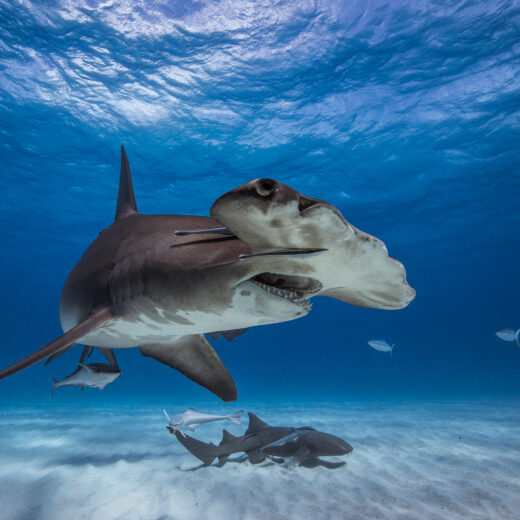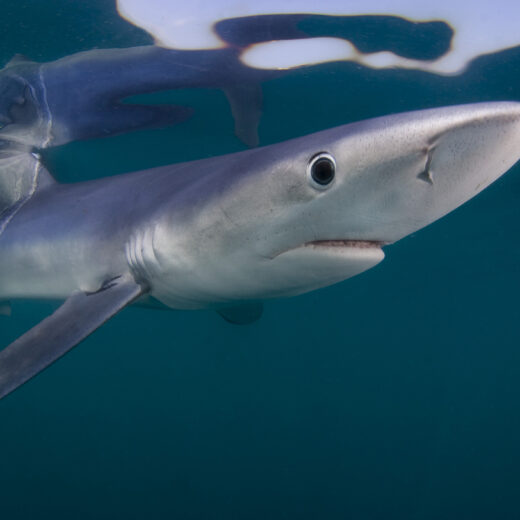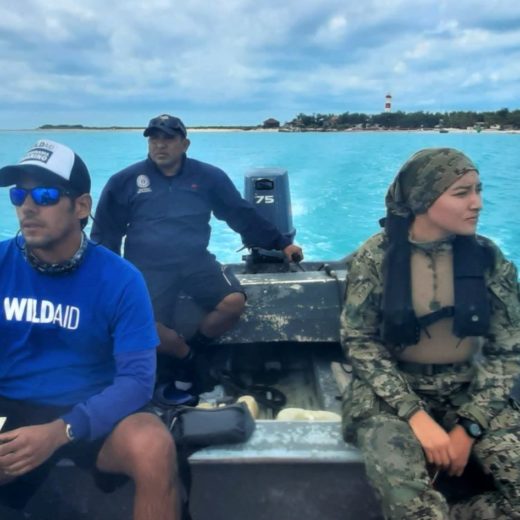
BY SILVIA SANCHEZ, WILDAID MARINE PROGRAM
In a study published this week, scientists from the National Geographic Society and Charles Darwin Research Station found that Darwin and Wolf in the Galapagos Islands is home to the world’s largest shark biomass (the total mass of sharks in a given area) in the world.
This is especially welcome news as sharks continue to be hunted for the shark fin trade — with an estimated 73 million sharks killed annually. According to lead author Pelayo Salinas de Leon, “[T]he islands of Darwin and Wolf are jewels in the crown of the Galapagos,” due to the abundance of these top predators indicating a healthy marine ecosystem.
However, the two-year study funded by Helmsley Charitable Trust also found that reef fish in the area have been severely reduced due to overfishing. To protect its marine life, the Ecuadorian government created a marine sanctuary at Darwin and Wolf in March.
In response, WildAid is working in cooperation with the Galapagos National Park Service and the Ecuadorian Navy to enforce the new regulations via its comprehensive marine protection model. We aim to integrate new monitoring technology into the existing electronic surveillance system to to track all vessels, including small fishing vessels, entering the marine sanctuary to protect it from illegal fishing and other unsustainable practices.
The new marine sanctuary and monitoring technology is crucial to the protection of Galapagos marine biodiversity.
Español
Las Islas Galápagos Tienen La Mayor Concentración de Tiburones En El Mundo
En un estudio publicado esta semana, científicos de la Estación de Charles Darwin y National Geographic descubrieron que las islas de Darwin y Wolf en la Reserva Marina Galápagos tienen la mayor concentración de tiburones en el mundo con más de 12.4 toneladas por hectárea.
La abundancia de estos principales depredadores indica un ecosistema marítimo saludable, una noticia especialmente buena cuando los tiburones siguen siendo cazados por sus aletas—con un estimado 73 millones de tiburones matados cada año.
El estudio de dos años financiado por Helmsley Charitable Trust, también encontró que los peses en el área habían sido severamente reducidos debido a la sobrepesca. Para proteger a sus recursos marítimos, el gobierno del Ecuador formo un santuario marino en Darwin y Wolf en Marzo 2016.
En respuesta, WildAid está trabajando en colaboración con la Dirección del Parque Nacional Galápagos y la Armada para aplicar la ley a través de un modelo de protección marítima comprensivo. Nosotros esperamos integrar software de AIS al sistema actual para monitorear todas embarcaciones dentro el santuario marino para protegerlo contra la pesca ilegal.
El nuevo santuario marino y la tecnología del monitoreo son cruciales para la protección de la biodiversidad marítima de las Galápagos. Por favor continúe su apoyo de WildAid mientras que nosotros aumentamos protecciones para las especies en peligro de extinción, incluyendo a los tiburones, dentro la Reserva Marina Galápagos. Muchas gracias!
Stay in touch and get the latest WildAid updates.
SIGN UP


